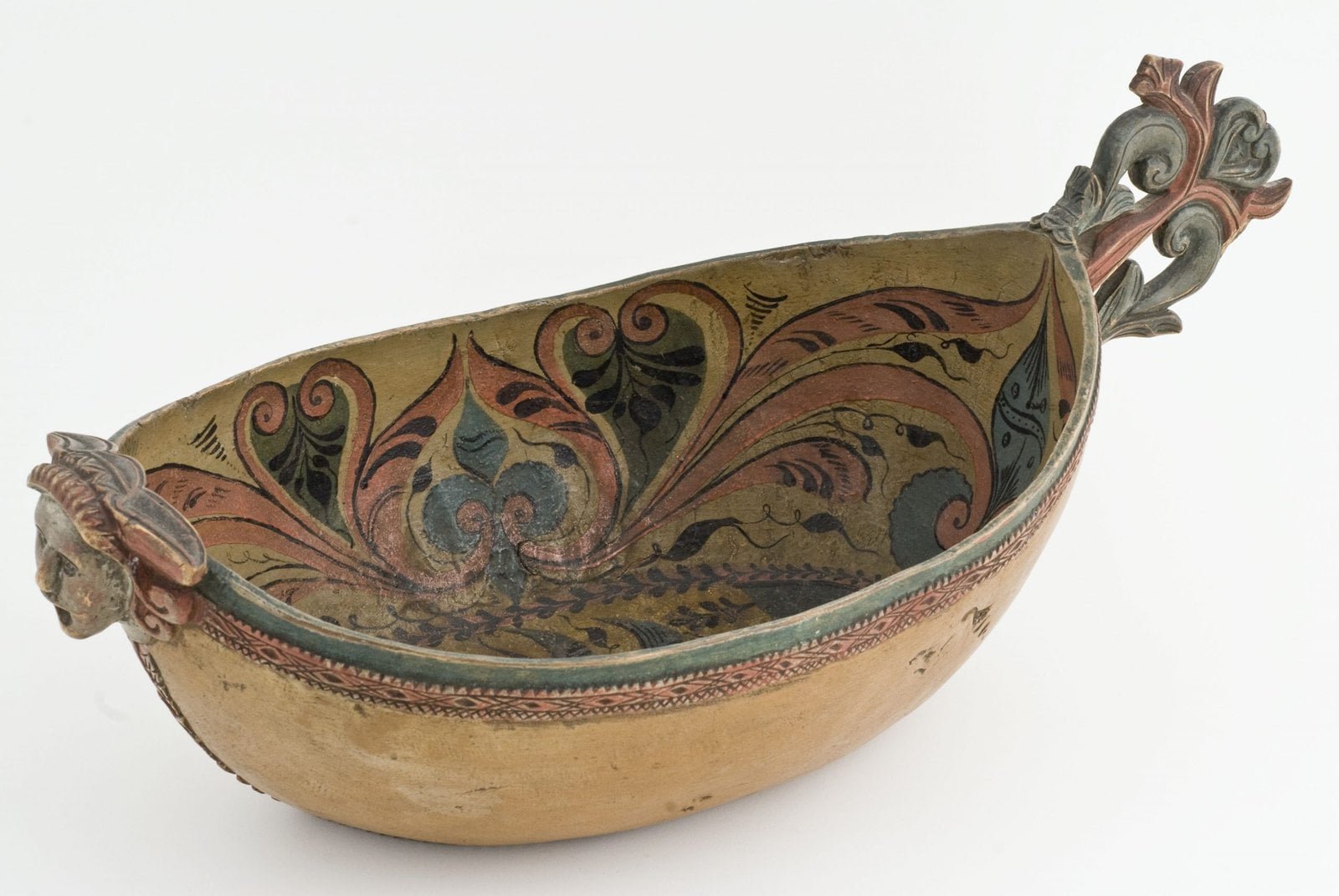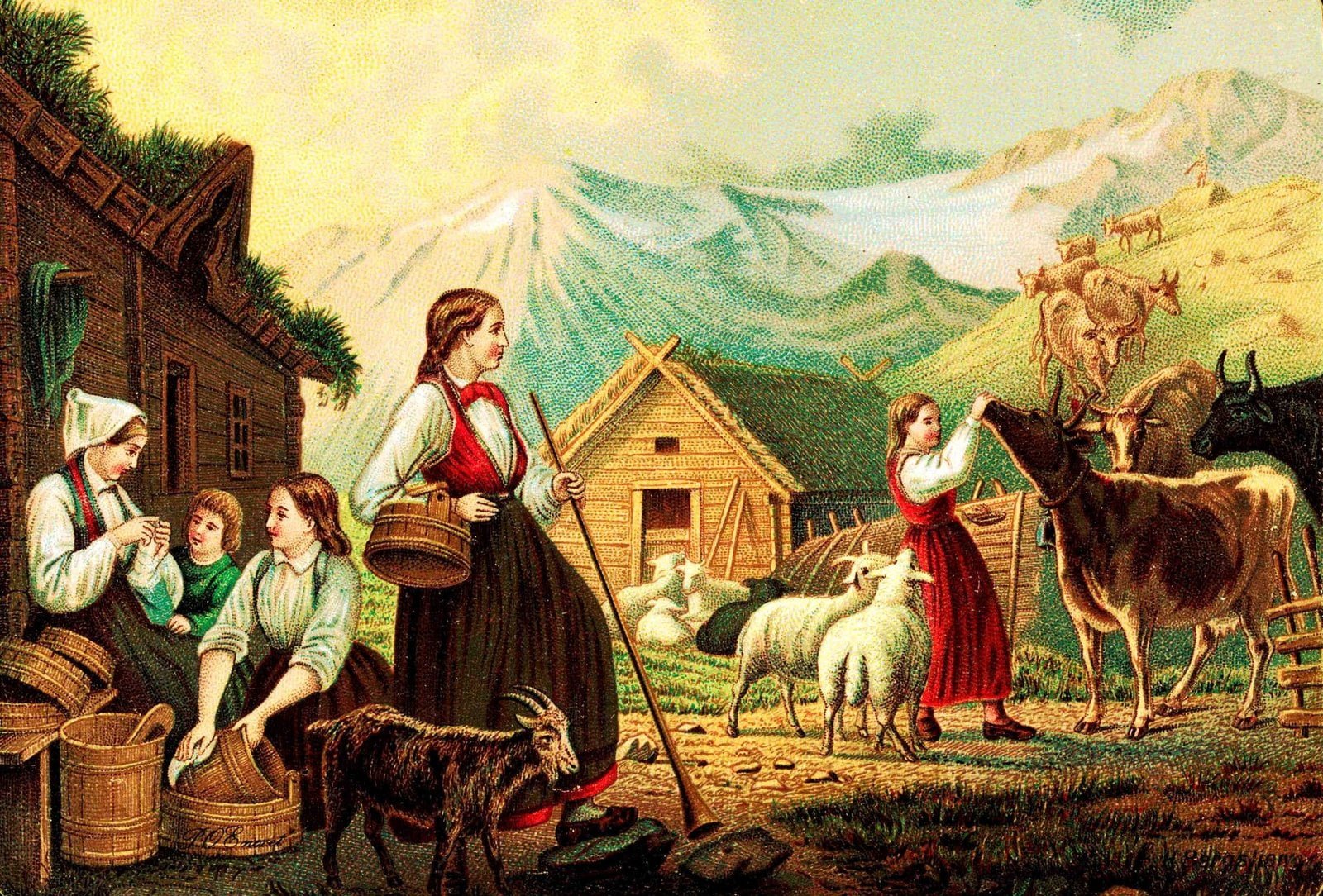Keeping the rodents out
The Norwegians placed the stabbur on top of wooden stilts or boulders; specifically designed to keep rodents and other creatures out.
Throughout summer and autumn, the farmers worked hard to add food to their storage; enough to last through a long and frosty winter.
The stabbur contained foods like:
- Threshed grain
- Flour
- Flatbread
- Butter
- Cheese
- Dried, smoked, or salted meat and fish – and much more
The stabbur did not have a fireplace, so the food and items stored there had to tolerate low temperatures.
A wooden building of all sizes
Normally – but not always – the stabbur was a wooden building; usually built – at least in more recent centuries – using the old log cabin technique – lafting.
The stabbur came in all shapes and sizes, depending on the number of people living on the farm, and the volume of the farm’s produce.
Some farms had more than one stabbur, and sometimes the building stood somewhat away from the main courtyard, as a safety-measure, in case of a fire.
The stabbur had small windows, or no windows at all. This was to ensure that the inside storage space was as cool as possible during summer – and not too cold during winter.
Often the only door with a lock
On the old Norwegian farm, the stabbur door was often the only door with a lock. The mistress of the farm was the keeper of the key – a sign of her undisputed status.
In Norwegian literature, the passing of the stabbur key – from one generation to the next – often invoked strong emotions and a sense of change and drama. Standing down as the keeper of the key could be painful, after a lifetime in charge.
As old as the Vikings
The stabbur has long traditions in Norwegian culture. The Viking Gulating Law mentioned the building as early as in the AD 900s.
One clear demand in the Gulating law, was that a tenant farmer had to leave the stabbur in top shape whenever ending his tenancy.
The Viking lawmakers were also clear on one specific point: should you find a man inside your stabbur, stealing from you, then you could strike him dead on the spot.
The Sami peoples also had elevated buildings and constructions similar to the stabbur, protecting both food and equipment.
Symbols of the past
We find the old stabbur on many Norwegian farms even today – now often empty reminders of the past.
Some of the existing stabburs are very old, and some are beautifully crafted and decorated.
The use of the stabburs dramatically changed after the Second World War, when electricity and modern appliances found their way into the old world.
With its unique shape and form, the stabbur has become a symbol of the old Norwegian hunting, fishing, and farming society.
Who knows, maybe one day, the stabbur will reclaim its age-old status, and once again play a vital role – in the life of the Norwegians.

Source: Visted, Kristoffer – Stigum, Hilmar. Vår gamle bondekultur. J.W. Cappelens Forlag 1971. | EGP.00038











